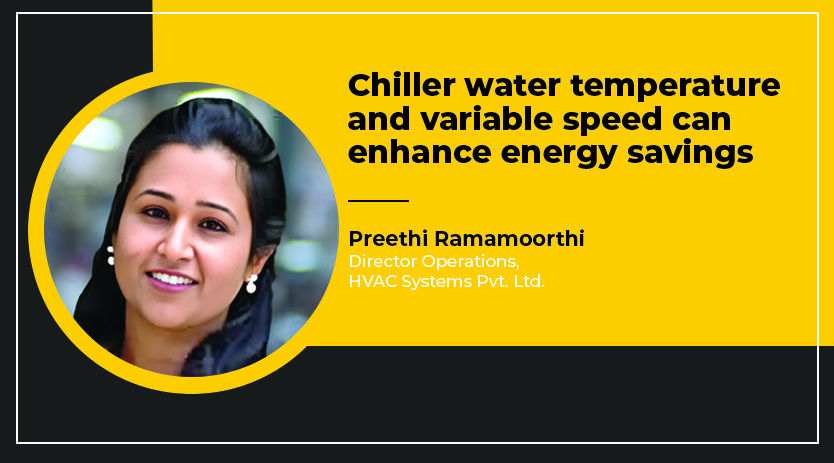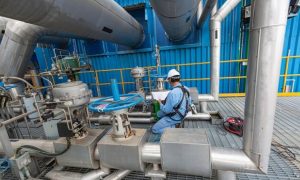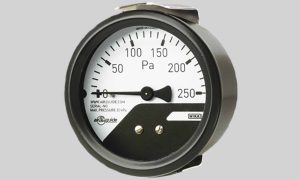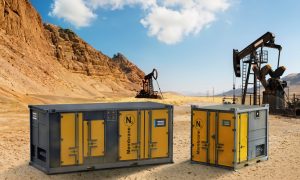Preethi Ramamoorthi, HVAC Systems Director of Operations, explains that air conditioning systems and thermal equipment now incorporate variable speed features, developing more economical and effective operational systems.
How critical is energy efficiency in HVAC systems, considering the impact of climate change and rising energy costs?
Energy efficiency begins with the choice of power resources for operating our machinery. The greatest opportunities for enhancing eco-friendliness, thus improving the sustainability of heating, ventilation, and air conditioning (HVAC) systems, exist during the initial design of facilities and the retrofitting of existing equipment. Recognising the substantial proportion of already established HVAC systems globally underscores the significance of retrofitting these systems.
What innovative technologies and advancements are being introduced to improve the energy efficiency of HVAC systems in commercial and residential buildings?
For overseeing and maintaining HVAC systems, the following eight-step approach can improve the energy efficiency of HVAC systems.
Maintain daily, seasonal thermostat set points
Placing a programmable thermostat in charge of managing airflow and temperature to ensure comfortable levels throughout different periods of the day and seasons leads to cost-effective heating and cooling processes. Establishing a predetermined timetable makes it possible to program the heating or air conditioning to uphold desired temperatures during specific time intervals. Modifying temperature configurations for unoccupied rooms during daytime or nighttime can result in energy savings of up to 10 percent.
A programmable thermostat, positioned to regulate air current and temperature to provide comfort at various times of the day, creates an economical heating and cooling operation. A pre-set schedule includes programming heat or air conditioning to maintain temperatures for specific time blocks within a day. Adjusting the temperature settings for rooms that are not occupied through the day or night can save as much as 10 percent in energy consumption.
Use automatic controls where possible
Enabling the automatic adjustment of HVAC equipment like fans, chillers, and compressor motors in terms of speed, output, and operating duration enables control of the system to deliver optimal heating and cooling levels. As an illustration, incorporating a variable air valve into the air distribution system of an educational institution in Indiana was employed to manage airflow. Implementing such programmable energy-efficient attributes resulted in approximately a 25 percent reduction in the school’s electricity expenses while ensuring students’ comfort during designated periods throughout the academic year.
Maintain equipment set points
Ensuring sensible equipment set points to attain the desired comfort levels without unnecessary strain is crucial. For instance, fans and blowers should be configured to operate at speeds that match the airflow for the designated area. Due to improper settings, systems often provide excessive output beyond actual requirements. This generates more power consumption to generate more heating or cooling than necessary, reducing energy efficiency. Implementing calculated set points can prevent this scenario and save energy.
Adjust and set HVAC operation for seasonal change
Elevating the temperature of the chiller water supply within a range that still meets the required temperature standards can lead to energy conservation. Depending on the system’s configuration, managing the cooling water temperature supplied to the chiller while adhering to the manufacturer’s recommendations can achieve the desired comfort level while consuming less power. This approach can substantially impact energy preservation, as it reduces the workload on the compressor while maintaining the desired comfort. A slight adjustment in temperature settings might suffice when transitioning between seasons. Such a minor detail alone could result in significant energy savings.
Consider variable speed equipment
Utilising variable speed options for fans, blowers, motors, and other components has enhanced the energy efficiency of numerous commercial facilities for heating and cooling purposes. In recent years, air conditioning and thermal equipment have integrated variable speed capabilities to create more cost-effective and efficient operating systems. The key to efficiency lies in appropriately adjusting settings and avoiding the continuous operation of motors, fans, and other components at their maximum designed speeds at all times. The flexibility of variable speed control permits equipment to be calibrated to meet heating and cooling requirements without constantly operating at a total capacity of 100 percent, providing energy savings while still satisfying demands.
Properly specify and size your system
Achieving desired environmental conditions within a facility while conserving energy relies on selecting the appropriate HVAC compressors and chillers. It’s essential to procure systems with sufficient tonnage and capacity based on the temperature needs throughout the year. Having oversized equipment in small spaces leads to high-speed operation and excessive energy consumption. And undersized units struggle in larger areas, compromising comfort due to improper sizing. The Air Conditioning Contractors Association of America (ACCA) Manual J² provides standardised guidelines for accurate air conditioning size determination. This manual accurately evaluates factors like insulation, wall, ceiling, and floor areas, including possible leakage of ducts.
Schedule and maintain equipment properly
Ensure a structured, schedule-driven maintenance plan for HVAC systems and their components, and promptly document the associated data. Develop a standardised maintenance checklist for HVAC operations that includes, at the very least, the following actions:
- Audit your HVAC size about any new equipment additions. Statistics indicate that a significant number of contractors frequently install excessively large units. As per the ACCA, installing a smaller unit capable of handling the load is better. Using larger equipment decreases energy efficiency, escalates utility expenses, and compromises the overall lifespan of air conditioning units.
- Frequently clean and replace air filters while regularly verifying thermostat settings. Consistent maintenance is vital for attaining peak HVAC performance. It’s necessary to replace filters obstructed by dirt and carbon particles, conduct coil cleaning to prevent overheating and assess component wear. Evaluating thermostats can detect poor settings or malfunction, leading to constant energy consumption. Faulty thermostats require prompt repair or replacement to restore a comfortable and energy-efficient environment.
- Perform regular inspections for refrigerant leaks. Leaks can undermine the system’s effectiveness and lower its efficiency. The system’s capacity could be compromised if left unaddressed, leading to irreversible damage. When units struggle to deliver robust and efficient performance, the compressor may be overworked due to system leaks. A careful and thorough assessment of both unit and system leakage contributes to prolonged HVAC lifespan and effective operation.
- Regularly check all drain lines and drip pans. If the connections for condensate in the system become obstructed, excess moisture can overflow from the drip pans, leading to a range of issues. The buildup of water also increases the risk of mould and fungal growth.
- Following this eight-step approach for managing and maintaining your HVAC system can ensure optimal performance and lower energy usage. This can suitably meet the fulfilment of your facility’s requirements and its occupants.

Are there any government regulations or incentives encouraging the adoption of energy-efficient HVAC systems, and how are businesses responding to these initiatives?
The government offers a range of directives, including Standards and Labeling by the Bureau of Energy Efficiency (BEE); Energy Conservation Building Codes (ECBC) by the Ministry of Power; the Perform, Achieve and Trade Scheme (PAT); the National Mission for Enhanced Energy Efficiency (NMEEE) as part of NAPCC; Market Transformation for Energy Efficiency (MTEE); Energy Efficiency Financing Platform (EEFP), and the Framework for Energy Efficient Economic Development (FEEED). While adaptation takes time, many organisations are shifting towards these schemes due to their advantageous outcomes.
Cookie Consent
We use cookies to personalize your experience. By continuing to visit this website you agree to our Terms & Conditions, Privacy Policy and Cookie Policy.















